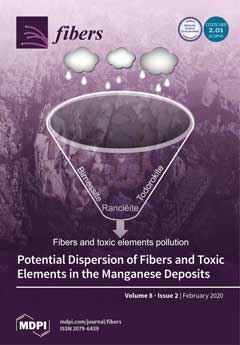The conventional chemical-based antistatic agents possess ecological and technological drawbacks, such as altering the bulk characteristics, flammability, and toxicity, but not the cost effective process. Recently, using conductive metal fibers in the woven structure also affects the mechanical properties of the fabric. To
[...] Read more.
The conventional chemical-based antistatic agents possess ecological and technological drawbacks, such as altering the bulk characteristics, flammability, and toxicity, but not the cost effective process. Recently, using conductive metal fibers in the woven structure also affects the mechanical properties of the fabric. To overcome these challenges, plasma treatment needs to be quite an effective method. In this study, polyester/cotton (P/C), 65/35%, blend fabric was treated in a vacuum-plasma-chamber using air, argon and oxygen. The electro-physical property of the samples were evaluated by measuring the surface and volume resistivities (ρ
s, ρ
v) using textile electrode Tera Ohmmeter (TO-3). Textile Softness Analyzer (TSA) has also been used to investigate hand-feel properties of the fabric. After treatment, the results revealed that the surface resistivity was reduced by 35.5% in the case of O
2, 27.3% for air and 18.4% for Ar, and also volume resistivity was decreased by 40.9%, 20.3% and 20% after O
2, air and Ar-plasma, respectively, whereas hand-feel properties are slightly affected at a higher power level and treatment time. Out of the three gases, oxygen had less effect on hand-feel properties and highly reduced the fabric resistivity. In addition, the SEM images showed that the surface morphology of the fibers changed to being rough due to the plasma.
Full article





